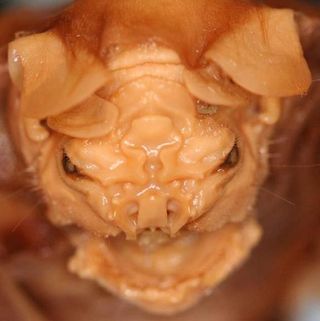Why Bats Hate Rain

Bats hate rain. They tend to stay out of it. Why?
First off, there's evidence that raindrops refract the sound waves bats emit and receive, confounding their ability to navigate by echolocation. Now, new research detailed in the latest issue of the journal Biology Letters has found another reason for their hatred of a rainy evening.
Christian Voigt and his colleagues at the Leibniz Institute for Zoo and Wildlife Research in Germany have discovered that wet bats must expend twice as much energy as dry ones to stay aloft. While dry bats burn 10 times more fuel during flight than they do at rest, wet bats burn 20 times more fuel.
It isn't because of the extra water weight, as you might suspect: The researchers measured only a negligible weight difference between dry and wet bats. They've presented two alternative explanations for the doubled energy expenditure. First, it could be that water makes bats cold, causing their metabolisms to ramp up to keep their bodies warm. Another possibility is that bats' fur they're the only furry animals that fly clumps together when it's wet, making them less aerodynamic.
Further research is necessary to determine which explanation is correct. One thing is clear: With echolocation gone batty , and fuel use doubled, it's no surprise that bats hate rain.
Follow Natalie Wolchover on Twitter @nattyover.
Sign up for the Live Science daily newsletter now
Get the world’s most fascinating discoveries delivered straight to your inbox.
Natalie Wolchover was a staff writer for Live Science from 2010 to 2012 and is currently a senior physics writer and editor for Quanta Magazine. She holds a bachelor's degree in physics from Tufts University and has studied physics at the University of California, Berkeley. Along with the staff of Quanta, Wolchover won the 2022 Pulitzer Prize for explanatory writing for her work on the building of the James Webb Space Telescope. Her work has also appeared in the The Best American Science and Nature Writing and The Best Writing on Mathematics, Nature, The New Yorker and Popular Science. She was the 2016 winner of the Evert Clark/Seth Payne Award, an annual prize for young science journalists, as well as the winner of the 2017 Science Communication Award for the American Institute of Physics.

